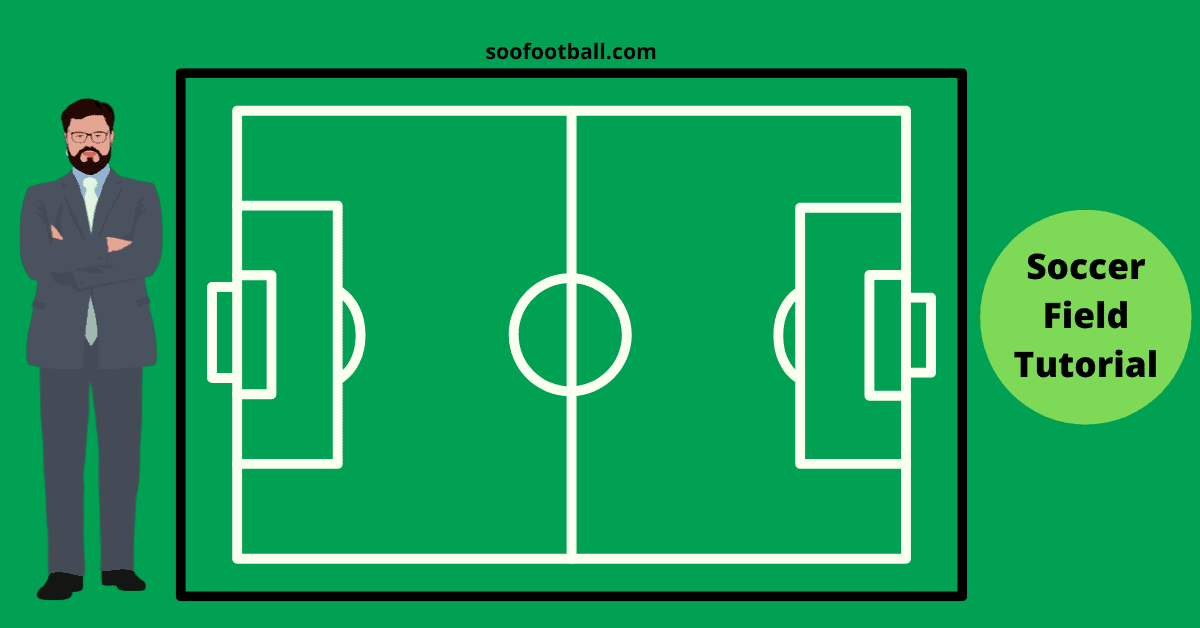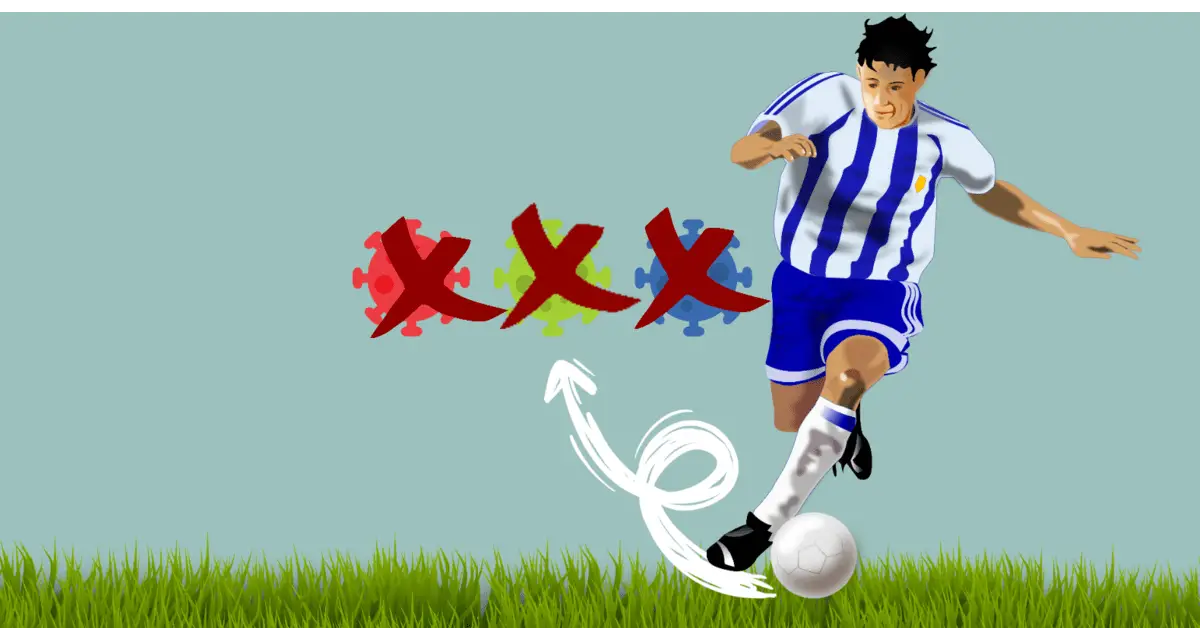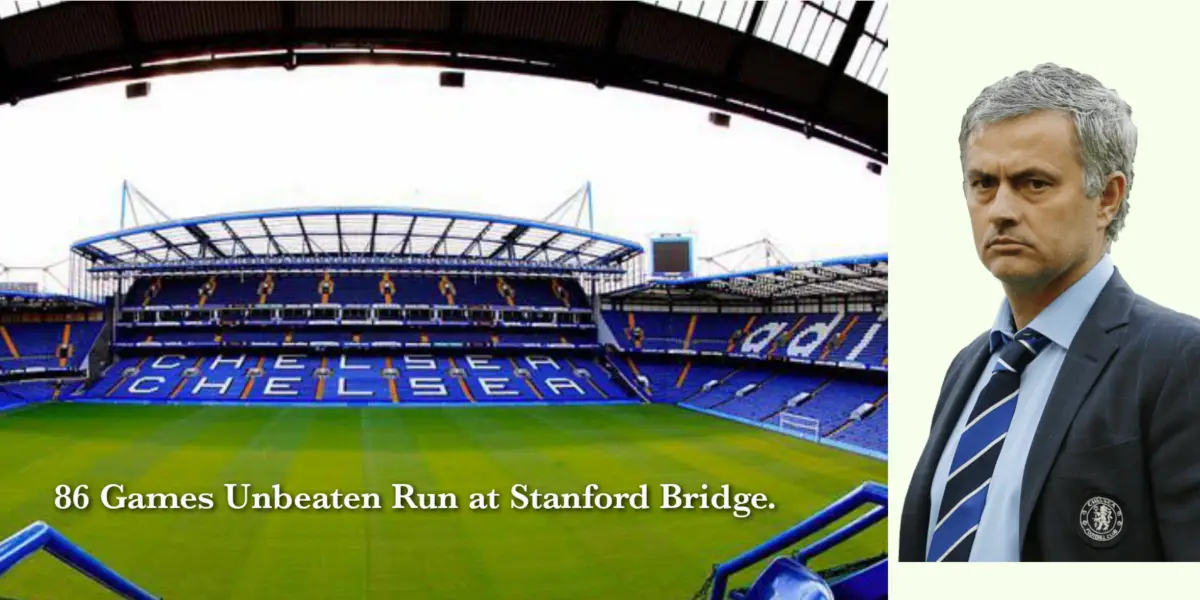As football fans, we are all caught up in the excitement of a football match that we forget some fundamentals. One such fundamental is the standard size of a soccer field.
It may interest you then to know that many football fans do not know the standard size of a soccer field. Well, not that we all should know, anyway.
But if you are curious to know, this article is just for you.
In this piece, you’ll get to understand every fundamental detail surrounding the standard size of a soccer pitch and everything on it.
Who Makes The Soccer Rules?
In football (or soccer, as you may call it), IFAB makes the rules of the game.
IFAB in full means International Football Association Board. This body is responsible for making the rules about football.
One of the rules they’ve recently introduced is that of VAR.
But for the purpose of this discussion, we’ll focus on the rules IFAB made concerning soccer pitch dimensions and everything related to it.
Soccer Field Dimensions
According to IFAB, there is no definite size or dimension for soccer fields.
However, there is a range of acceptable dimensions for a standard soccer field. That is why all standard football fields are not the same size.
To put it straight, the standard range of acceptable dimensions of a soccer field is this; Width – a minimum of 50 yards (45.72 Meters) and a maximum of 100 Yards (91.44 Meters). Length – minimum of 100 Yards (91.44 Meters) and maximum of 130 Yards (118.872 Meters).
In essence, the minimum size of a football field is 50 by 100 Yards (or 45.72 by 91.44 Meters). The maximum football field size is 100 by 130 Yards (or 91.44 by 118.872 Meters).
Size Of The Center Circle
The center circle of the football pitch, as the name indicates, is located in the middle of the pitch, around the center line.
The center circle should have a 9.144 Meters (10 yards) radius extending from the center of the field.
This is the ideal standard of the center circle of any football field, anywhere. Unlike the soccer field dimension, the center circle does not have a range.
Furthermore, the midpoint in the middle of the center circle is where the ball must be placed at any kickoff.
Kickoffs could be the beginning of the first or second half of normal time or extra time.
Size Of The “Box 18” Or Penalty Box
The penalty box is popularly called box 18 in many regions. Why? The Penalty box is just 18 yards (16.46 Meters) from the Goal line.
In addition to the Penalty box, there is a small arch right outside it called the “Penalty arch”.
The arch is exactly 10 yards (9.144 Meters) away from the Penalty spot.
In reality, the Penalty arch is not part of the penalty box.
The only function of the Penalty arch is to set a boundary for players not to encroach when a penalty kick is being taken during normal regulation time.
The referee ensures that no player is inside the penalty arch when a spot-kick is being taken.
Related: Why Soccer Is So Popular
Standard Size Of The 6 Yard Box
The smaller rectangle in the penalty box is called the 6-yard box.
It is so-called because the box is just 6 Yards (5.5 Meters) away from the goal line.
The 6-yard box serves the following purposes:
- Goal kicks are taken from anywhere around the line on the 6-yard box.
- Any indirect free-kick awarded to the defending team is played from anywhere around the box.
- Free-kicks awarded to the attacking team are played outside the 6-yard box but closest to where the infringement took place
Distance Of The Penalty Spot To Goal
The penalty spot is just 12 Yards (10.97 Meters) away from the goal line.
It is on this spot that penalty kicks are being taken.
For clarity’s sake, the penalty spot is the small white-marked spot in between the penalty box and the 6-yard box.
Goal Post
The goalpost is also an important component of a standard soccer field.
To get detailed info on soccer goalposts, read our detailed guide here.
The Corner Flag And Quarter Circle Mark
The Corner Flags and quarter-circles are located at the 4 edges or corners of the field.
First, the corner flag should be 5 feet (1.524 meters) tall and the pole must be 2.5CM in diameter.
Also, you’ll notice that every Corner flag has a quarter-circle mark on the field. These quarter circles must be 1 Yard (0.9144 Meters) radius.
The rule also demands that the ball must be anywhere on the quarter circle mark when a corner is to be taken.
FAQ
In many parts of the world, the soccer field is also called a football pitch or just a pitch
The minimum size of a football field is 50 by 100 Yards (or 45.72 by 91.44 Meters). The maximum football field size is 100 by 130 Yards (or 91.44 by 118.872 Meters).
The soccer field is divided into two equal halves. Each half must be at least 50 Yards long.
The ball goes out of play when it crosses either of the two lines on the length of the pitch and results in a throw-in. Any area outside these lines is called a “sideline”.
The standard soccer goal is 24 feet wide. Read our complete guide on soccer field dimensions.
A soccer field must be at least 91.44 meters long and not more than 118.872 meters.
Conclusion
As you may have found out, there are so many components of a football pitch.
We have explained the rules behind every single component of a soccer field and its dimensions.
Notably, a standard football field is at least 50 by 100 Yards (or 45.72 by 91.44 but cannot be more than 100 by 130 Yards (or 91.44 by 118.872 Meters).
We hope that this article has given you the sufficient info you need about the soccer field.
If you think there are any parts left out, feel free to mention that in the comment box.
You may also want to find out the rules about football kits, undisclosed transfer fee, or Premier League loan.
Further Reading:





